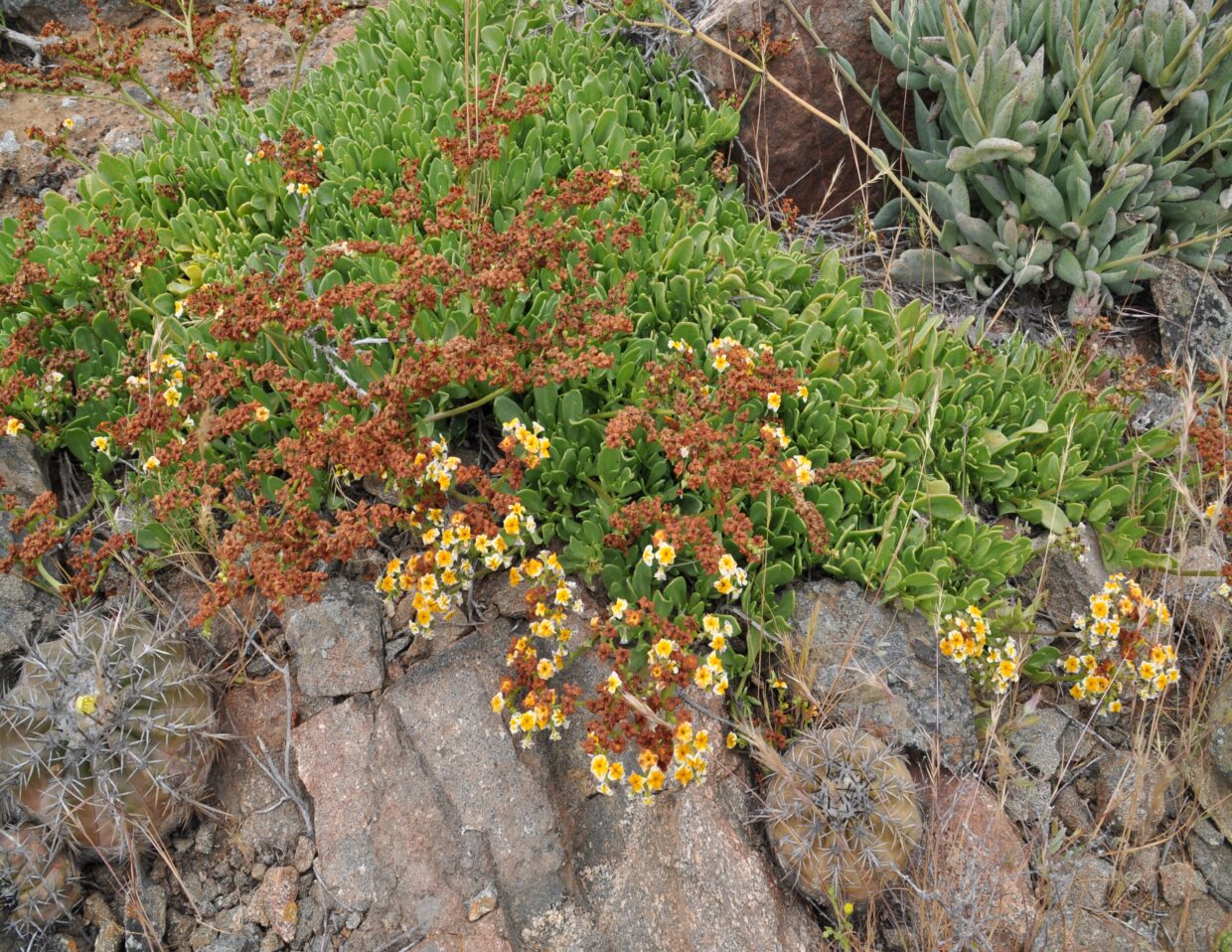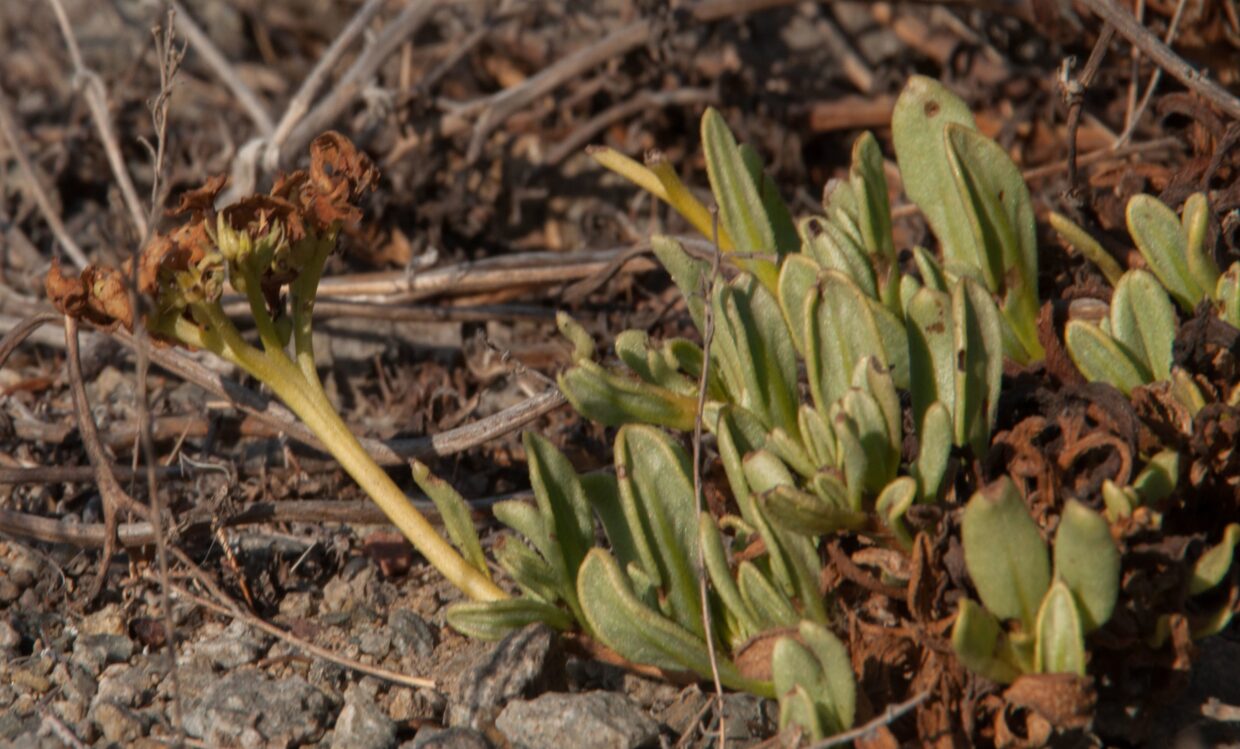Place of Publication
Cont. Gray Herb. 81: 35 (1928)
Type citation
Based on Cochrane corymbosa: "in prov. Coquimbo" [dry valleys and hills between Huasco and Copiapô], [Sept. 1841], T. Bridges 1341 (lectotype: BM, selected by Johnston (1928b: 35); isolectotypes: Ε E00143685, Κ ).
Synonyms
References
-
Johnston (1928)
Johnston, I.M.
1928. Studies in the Boraginaceae. VII. The South American species of Heliotropium; Notes on various Boraginoideae. Contributions from the Gray Herbarium of Harvard University 81:3-83
-
Luebert (2013)
Luebert, F.
2013. A revision of Heliotropium sect. Cochranea (Heliotropiaceae). Kew Bulletin 68(1): 1-54.
Regions
Atacama and
Coquimbo
Habitat
Desert and
Desert fog oases (Lomas)
Distribution and habitat
Coastal or interior areas within the province of Copiapó and Huasco between 27º42'S and 28º38'S. From sea level to 620 m where it grows with Atriplex clivicola, Eulychnia breviflora and Oxalis virgosa.
Distribution
-
Heliotropium megalanthum I.M. Johnst.
-
-
Heliotropium megalanthum I.M. Johnst.
-
-
Heliotropium megalanthum I.M. Johnst.
-
-
Heliotropium megalanthum I.M. Johnst.
-
-
Heliotropium megalanthum I.M. Johnst.
-
-
Heliotropium megalanthum I.M. Johnst.
-
-
Heliotropium megalanthum I.M. Johnst.
-
-
Heliotropium megalanthum I.M. Johnst.
-
Show all locations
Conservation status
-
Vulnerbale B2 (a,b,c)
(Luebert (2013))
Habit
Decumbent shrubs, 0.09-0.4 m tall. Flowering from September to October.
Key characteristics
This species is distinguished by its large flowers with a yellow to orange corolla throat and its decumbent habit (Luebert, 2013). It could be confused with H. floridum but this has strigose leaves and an erect habit and the style is longer than the stigmatic head (Luebert, 2013).
Notes
Seed of this species is banked by the national seed bank of Chile, INIA.






